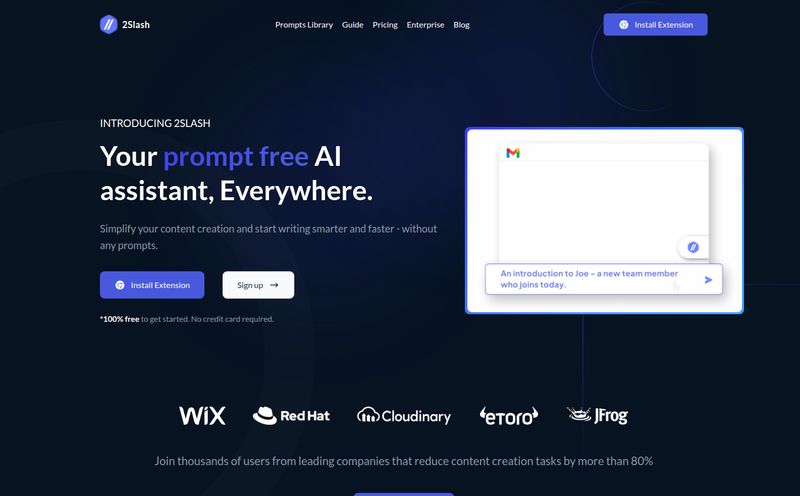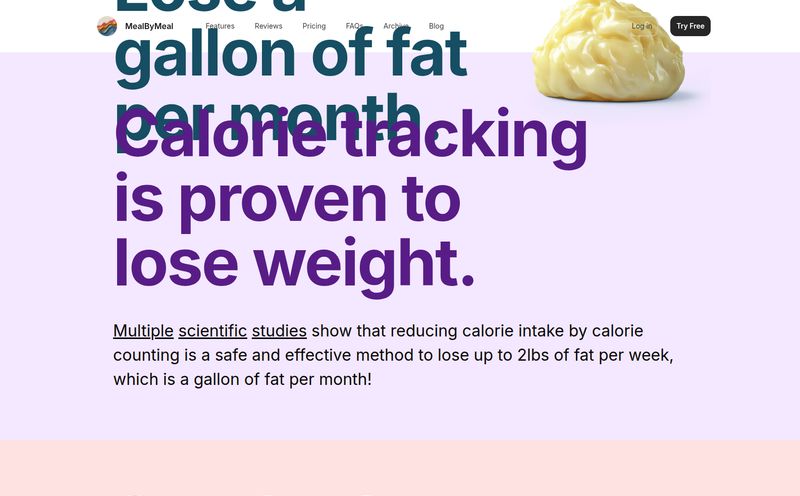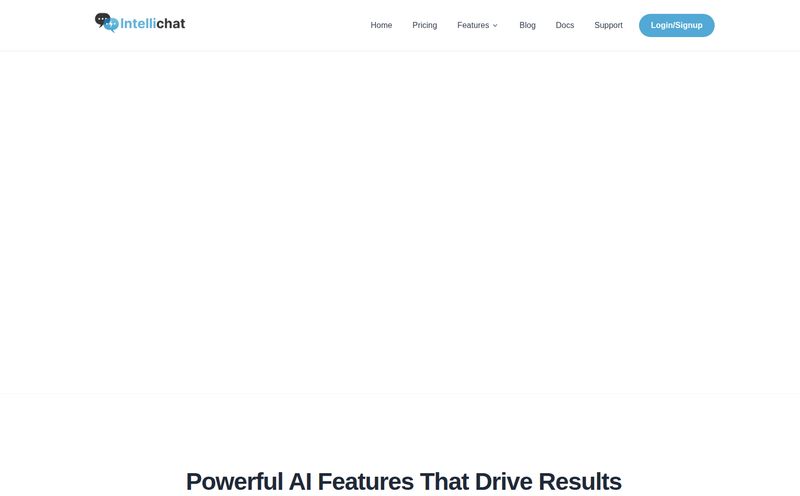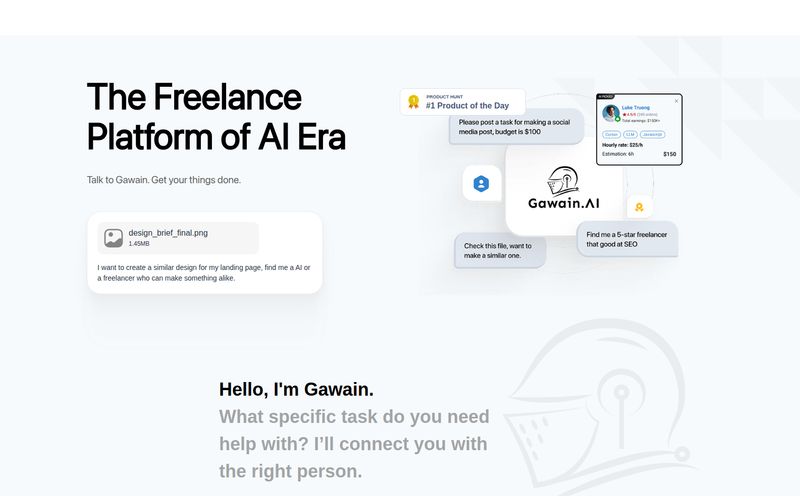You know the feeling. You need a new pair of running shoes. Simple, right? An hour later, you have 27 tabs open, you’re reading a heated debate on a Reddit forum about arch support, and you’ve somehow ended up watching a video of a cat playing the piano. The shoes are forgotten. This is the digital paralysis of modern e-commerce. It’s exhausting.
So, when I heard whispers of a new tool called ShoppingBuddy, my ears perked up. The promise? A personalized AI shopping assistant that makes buying stuff as easy as texting a friend. A tool to cut through the noise. Naturally, I had to see it for myself.
I went to find their page, ready to be wowed, and… BAM. Page Not Found. A classic 404 error from Netlify. You can see my screenshot—or lack thereof. Just a blank screen and a little error message. My first thought? “Well, that’s not a great start.” But my second thought, as a guy who’s been in the tech and SEO space for years, was, “Ah, they’re in pre-launch. This is that raw, early stage.” And honestly? That just made me more interested.
So, What Exactly Is ShoppingBuddy Supposed to Be?
Putting aside my little 404 adventure, the concept behind ShoppingBuddy is genuinely exciting. It’s not just another shopping search engine. Think of it less like a search bar and more like a personal shopper who lives in your phone. You don’t just type in “blue toaster.” You have a conversation.
Something like: “Hey, I’m looking for a retro-style blue toaster, four slices, but not too expensive. Oh, and it needs to have good reviews for toasting evenly.”
ShoppingBuddy’s AI is designed to take that natural language, understand the nuance, and then dive into its integrations with major online stores to find products that actually match. It’s the difference between yelling a keyword into a canyon and having a quiet conversation with an expert. At least, that's the dream.

Visit ShoppingBuddy
The Allure of an AI-Powered Shopping Experience
We're all drowning in choice. A study I stumbled upon from the American Psychological Association years ago talked about the “tyranny of choice,” and it’s only gotten a thousand times worse since then. This is the problem ShoppingBuddy is aiming its sights on.
Smarter Filtering Than a Standard Search
Let's be honest, the filtering options on most e-commerce sites are… okay. They’re rigid. You can filter by price, brand, color. But you can't filter by vibe. You can't say, “show me jackets that would look good at an indie rock concert but are also professional enough for a client meeting.” ShoppingBuddy’s AI aims to understand that intent, that feeling, behind a search. It’s a bold claim, and I'm curious to see how well the AI can actually interpret human subjectivity. Its a tough nut to crack.
A Conversation, Not Just a Transaction
I’ve always felt that the best product recommendations come from people. That friend who knows your style, that expert at the store. The chat-based interface of ShoppingBuddy tries to replicate that. It’s a move away from the cold, impersonal grid of products and towards a more guided, conversational flow. This could be a game-changer for people who get easily overwhelmed or aren't quite sure what they're looking for. It turns a chore into a discovery process.
Let's Be Real: The Current State of Affairs
Okay, so back to that 404 page. The fact that ShoppingBuddy is in pre-launch is both its biggest weakness and its most intriguing quality. It means we can’t use it right now. We can’t test its AI. We can’t see if it lives up to the hype. All we have is a concept and a waitlist that you have to sign up for with your email.
And yes, that's a bit of a bummer. But it also presents an opportunity to get in on the ground floor. We're seeing the blueprint before the building is finished. For tech enthusiasts and early adopters, that’s catnip.
Weighing the Potential of ShoppingBuddy
Even without a hands-on test, we can break down the potential based on what we know. On one hand, the upsides are massive. The idea of getting back hours of my life that would have otherwise been lost to the Amazon scroll-a-thon is incredibly appealing. Having a single, intelligent interface that pulls from multiple stores could save not just time, but money too, by finding the best deals without me having to open a dozen browser tabs.
On the other hand, there are some clear caveats. First, it's pre-launch, a big question mark. Second, it relies on AI. And as we all know, AI can be… weird. It can misunderstand context or get stuck in recommendation loops. We’ve all seen Netflix recommend the same movie five different ways. Will ShoppingBuddy’s AI be truly intuitive, or will it just be a slightly fancier search algorithm? The jury is out. And finally, the email signup for early access is a classic lead-gen tactic. Nothing wrong with it, but it's a barrier to entry, however small.
| The Good Stuff (Pros) | Things to Keep in Mind (Cons) |
|---|---|
| Truly personalized shopping that learns your style. | It's not actually out yet (pre-launch). |
| Saves a ton of time by filtering products intelligently. | AI recommendations might not always hit the mark. |
| Chat-based interface is intuitive and easy to use. | You have to sign up for a waitlist to get access. |
| Pulls products from many major online stores. | No public information on pricing yet. |
What's the Price Tag on This Digital Friend?
This is the million-dollar question. Or, hopefully, the free question. There is zero information about ShoppingBuddy’s pricing model right now. I can only speculate. Will it be a freemium model, with basic features for free and a subscription for advanced analytics or more integrations? Or will it be entirely free for the user, funded by affiliate commissions from the stores it links to? My money’s on the latter, as it’s the most common model for tools like this. It creates the least friction for users, which is what you need to build a massive audience.
How This Could Shift E-commerce SEO
Putting my SEO hat on for a second, tools like ShoppingBuddy represent a fascinating shift. For years, e-commerce SEO has been about optimizing product pages for specific, high-intent keywords like “men's size 11 waterproof hiking boots.” But if users start shifting to conversational assistants, the game changes. The focus might move towards optimizing for natural language questions and satisfying user intent on a deeper level. It’s less about matching keywords and more about being the best answer to a complex query. It's a trend we're already seeing with the rise of Google's SGE, and ShoppingBuddy is another soldier in that army.
Frequently Asked Questions about ShoppingBuddy
What is ShoppingBuddy in simple terms?
It’s an AI-powered app that acts like a personal shopper. You chat with it about what you want to buy, and it finds products for you from major online stores, saving you the hassle of endless searching.
How does the AI in ShoppingBuddy work?
It uses natural language processing to understand your requests—not just the keywords, but the context and style. It then filters through thousands of products to give you personalized recommendations that match your specific needs.
Is ShoppingBuddy free to use?
We don’t know yet! The platform is still in a pre-launch phase, and no pricing information has been released. It could be free, have a subscription, or a mix of both.
When can I actually try ShoppingBuddy?
Currently, access is limited to an early-access waitlist. You’ll have to find their official website and sign up with your email to be notified when it’s available.
How is this better than just searching on Amazon?
The main difference is the conversational and personalized approach. Instead of you doing all the filtering and comparing, ShoppingBuddy does the heavy lifting. It’s designed to understand nuanced requests that a simple search bar can't handle, acting more like a human assistant.
Final Thoughts: A Cautiously Optimistic Peek at the Future
So, where does that leave us with ShoppingBuddy? Intrigued. Cautiously optimistic. A little frustrated I can't play with it yet. It taps into a universal pain point for anyone who has ever shopped online. If it can deliver on even half of its promises, it could genuinely change the way we discover and buy products.
For now, it’s a promising ghost in the machine, a 404 page with a big idea behind it. I’ve signed up for the waitlist, and you can bet I’ll be back with a full, hands-on review the second I get access. Until then, I’ll be here, lost in my 27 tabs, dreaming of a better way.



